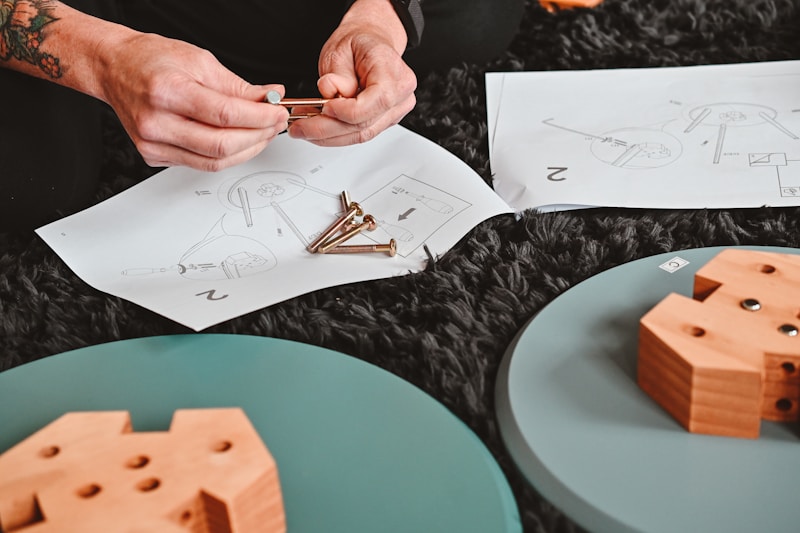Mastering the Craft: Tips for DIY Fitting Adjustments
In today’s world of fashion and personalization, understanding how to make DIY fitting adjustments can be a game-changer. Whether you’re trying to fit a new outfit perfectly, revamp an old piece, or even tailor garments from scratch, the ability to make these adjustments yourself not only saves money but also enhances your fashion experience. In this article, we will explore various tips for DIY fitting adjustments, practical techniques, and additional considerations for achieving that perfect fit.
Understanding the Importance of Proper Fit
Before diving into the specifics of fitting adjustments, it’s essential to recognize the significance of a good fit. Clothing that fits well not only flatters your body shape but also boosts your confidence. On the other hand, ill-fitting garments can lead to discomfort and diminish your overall appearance. The following table summarizes the key benefits of achieving the right fit:
| Benefit | Description |
| Comfort | Well-fitted clothing allows freedom of movement. |
| Style | A good fit enhances your style by highlighting your best features. |
| Confidence | Wearing clothes that fit well makes you feel more self-assured. |
| Durability | Properly adjusted garments can last longer as they wear better. |
The Essential Tools for DIY Fitting Adjustments
Before you begin making adjustments, gather your tools. Having the right supplies can significantly ease your process. Here’s a list of essential tools you’ll need:
- Measuring Tape: Accurate measurements are crucial for any adjustments.
- Tailor’s Chalk or Fabric Markers: These are helpful for marking adjustments on fabric.
- Scissors: A good pair of fabric scissors will help in cutting fabric cleanly.
- Sewing Machine: For best results, a sewing machine will make your adjustments easier and neater.
- Needles and Thread: Always have a variety of needles and thread to match your fabric.
- Seam Ripper: Mistakes happen; having a seam ripper handy makes correcting them easier.
Common Fitting Adjustments to Consider
Now that you are equipped with the right tools, let’s walk through some common fitting adjustments you can make on your garments:
1. Taking in or Letting Out Seams
One of the most common adjustments is to take in or let out seams. If your garment is too loose, you can easily take the side seams in. Conversely, if it’s too tight, check if there’s enough extra fabric (usually in the seam allowances) to let it out.
2. Adjusting the Length
Whether it’s pants, skirts, or sleeves, adjusting the length can drastically improve fit. For pants, measuring the inseam is crucial. For skirts and dresses, consider how your height and comfort level affect the length.
3. Modifying the Shoulder Width
Sometimes clothes can feel bulky in the shoulders. If you find that your sleeveless tops are wide at the shoulders, consider taking them in for a more tailored fit.
4. Taking Care of Gaping Armholes
Gaping can occur in the armholes, especially with larger bust sizes. You can solve this by taking in the armhole seam slightly to reduce gaping and achieve a smooth silhouette.
5. Creating a Waistline
If your dress or blouse lacks structure, consider adding darts or taking it in at the waist to accentuate your waistline and create a flattering silhouette.
Techniques for Successful DIY Fitting Adjustments
Now that we’ve covered the types of adjustments, it’s time to explore the techniques to make these changes successfully:
Measuring Accurately
Accurate measurements are critical. Ensure you’re wearing fitted clothing while taking measurements to get the most precise results. Measure the bust, waist, hips, and inseam, and always write them down for reference.
Marking Adjustments
Utilize tailor’s chalk or fabric markers to indicate where you’ll be making adjustments. Mark clearly, and remember to measure twice before cutting or sewing.
Pinning the Fabric
Before making any permanent changes, pin the area you plan to adjust. This allows you to try on the garment and ensure the fit is to your liking before sewing.
Testing Before Finalizing
Always test your adjustments on a less critical garment first if you’re unsure. Whether you’re making a major change or a small adjustment, testing is the best way to build your confidence.

Final Considerations and Tips
Remember, DIY fitting adjustments require practice. Don’t be discouraged if your first few attempts don’t come out perfectly. Tailoring is an art that improves over time. Here are some final suggestions:
- Don’t Rush: Take your time with fitting adjustments to ensure accuracy.
- Invest in a Good Measuring Tape: A flexible and retractable measuring tape is a worthy investment.
- Seek Online Resources: There are numerous tutorials and videos available that can guide you through specific adjustments.
In conclusion, mastering the art of DIY fitting adjustments opens up a world of opportunities in fashion and self-expression. With these tips and techniques, you can tailor your wardrobe to fit your unique shape, enhance your style, and showcase your personality. Make certain to practice regularly and experiment with various garments to discover the best fit for you. Happy tailoring!